moon-fox (Joseph R)
Seed
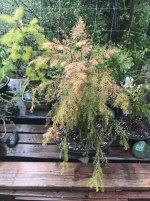
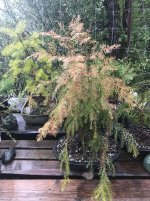
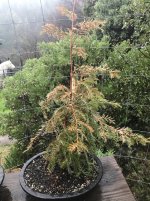

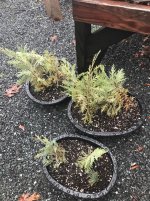
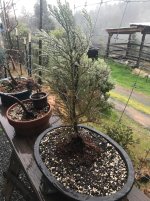
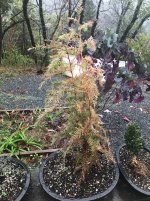
I have 3 tripod un-styled attempted trunk fusion trees for coast redwood, they got sunburnt a couple months ago from forgetting to water enough one day, I repotted the tripod redwoods about a week or 2 ago during a warm spell in January the buds had swelled slightly, and gave them one dose of vitamin b1 and fertilizer tea during that time, now it is going through a rainy cycle and got kinda cold again, I have a small polycarbonate greenhouse that I could put them in to maybe un-waterlog them and dry them out a bit, any tips?, I would like them to be healthy enough for wiring in the spring, but most important is that I want to keep them alive until they are vigorous again, maybe wrong time repotting and wrong Time fertilizer, along with sunburn? the branches are still flexible and the brown parts are green underneath,
I also have some seed grown redwoods that I recently repotted in a 2 plants in pot way and are kind of brown or yellow?,
I have a repotted Sierra sequoia redwood that is browning near the bottom,
I have a couple seed grown port Orford cedars that are browning a little bit but seem mostly pretty much healthy. - anything I had repotted recently I gave a little diluted vitamin b1 in a watering can.
I have other bonsai plants that seem mostly healthy but I may add them to this thread if I have questions or something, -most of my plants are grown from seen over the past 2-3 years with a pump sprayer, cold stratification in the fridge and a small aluminum and polycarbonate greenhouse, some of my plants like the Italian cypresses in 1 gallons have slight browning but most are fine, also most of them are (or for) starter bonsai with the idea of turning them into weird bonsai over time.
